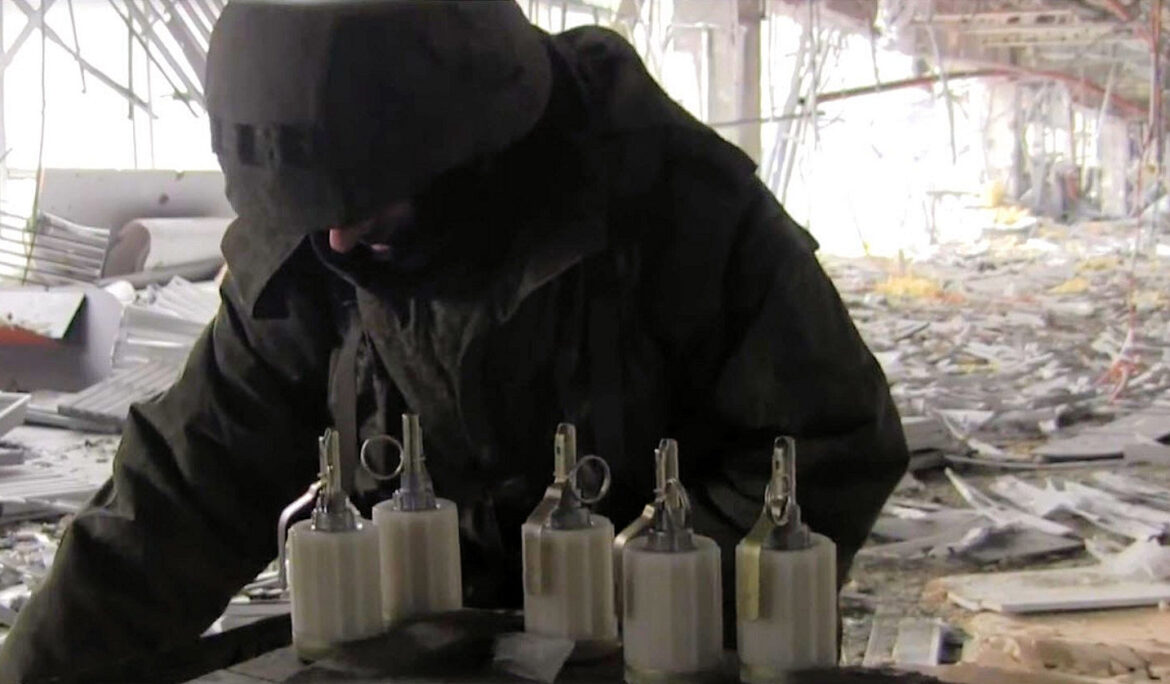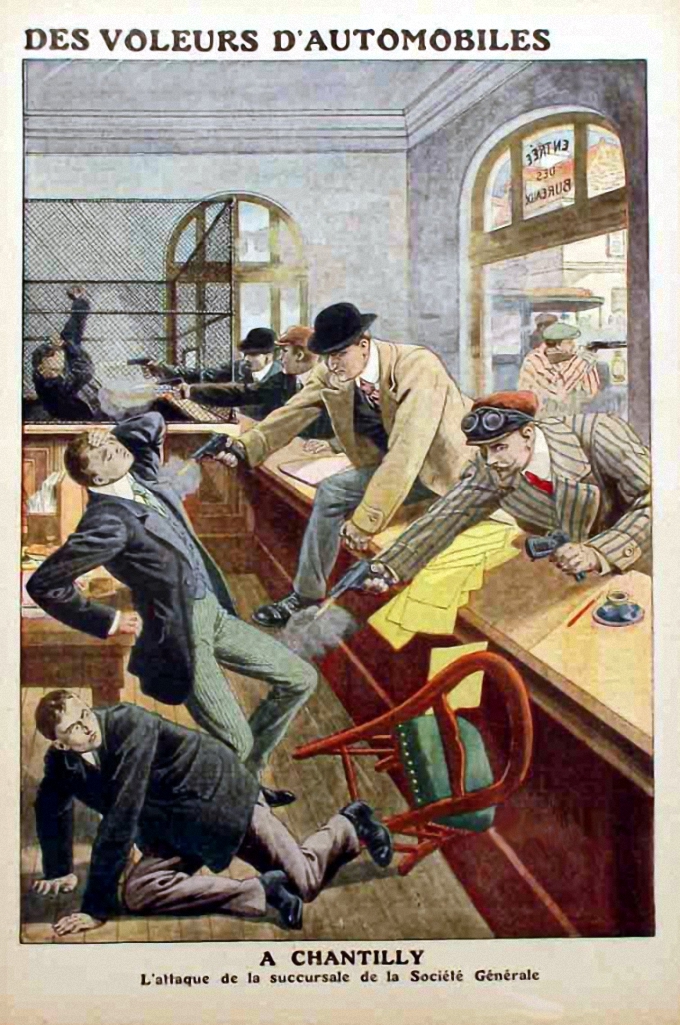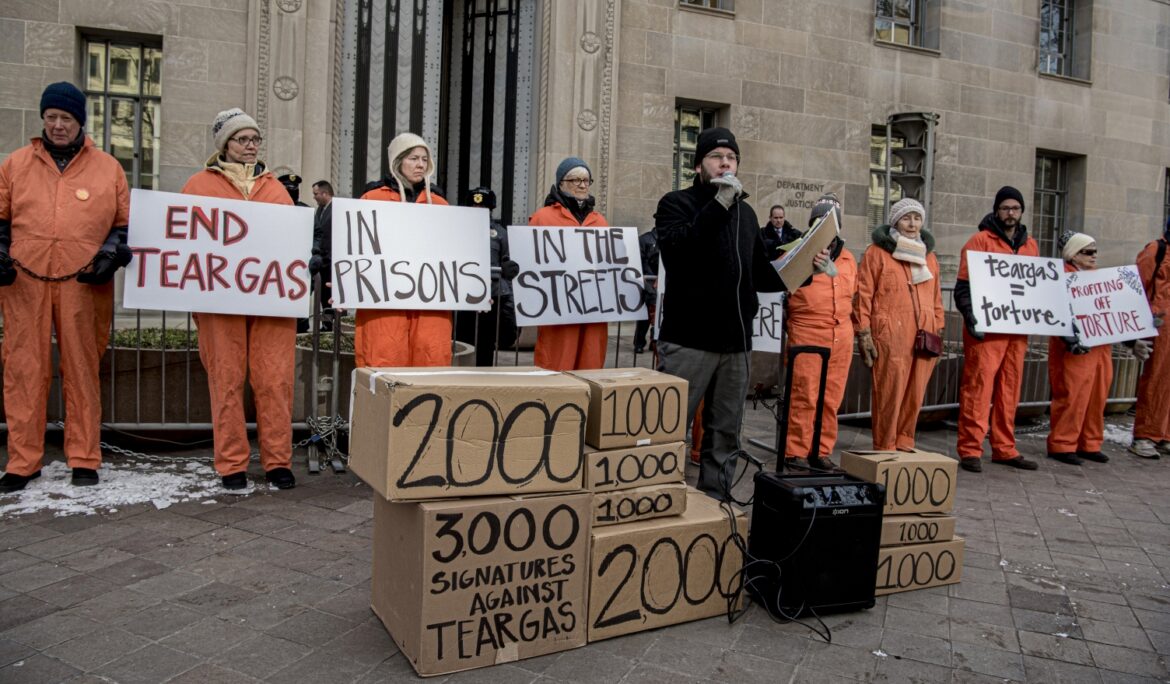Chloropicrin and its alleged use in the Ukrainian war (part 3)
The first instalment of this four-part blog series reviewed the allegations of Russian chemical weapon (CW) use in the Ukrainian war from its start in 2014 until the present. At the meeting of the Executive Council of the Organisation for the Prohibition of Chemical Weapons (OPCW) in March 2024, the Ukrainian delegate reported 1,060 incidents since the Russian invasion in February 2022. More recently, Ukraine claimed in a note verbale to the OPCW dated 13 June that it had recorded a total of 2,968 cases of Russian use of riot control agents (RCAs) between 15 February 2023 and 25 April …
Chloropicrin and its alleged use in the Ukrainian war (Part 1)
On 1 May, the United States formally accused Russia of using ‘the chemical weapon chloropicrin against Ukrainian forces in violation of the Chemical Weapons Convention (CWC)’. It added: ‘We make this determination in addition to our assessment that Russia has used riot control agents as a method of warfare in Ukraine, also in violation of the CWC. The use of such chemicals is not an isolated incident and is probably driven by Russian forces’ desire to dislodge Ukrainian forces from fortified positions and achieve tactical gains on the battlefield.’ Allegations of chemical weapons (CW) use first appeared after the start …
Chloropicrin and its alleged use in the Ukrainian war (part 2)
The first of four parts in this blog series reviewed the allegations of Russian chemical weapon (CW) use in the Ukrainian war from its start in 2014 until today. The Ukrainian delegate reported 1,060 incidents since the Russian invasion in February 2022 at the meeting of the Executive Council of the Organisation for the Prohibition of Chemical Weapons (OPCW) in March 2024. On 23 May, the Wall Street Journal quoted Ukrainian sources that the number of CW incidents was quickly approaching the 2,000 mark: As of May 3, the Support Forces have confirmed 1,891 such attacks since they began tracking …
From irritant to tear-gas: the early story of why a toxic agent became non-lethal
With the recent international attention to riot control agents (RCA) people have raised the question how their use against protesting civilians can be legal when the toxic agents are internationally banned from battlefields. Framed as such, the question is not entirely correct. In my previous blog posting I argued that outlawing RCAs for law enforcement and riot control based on the above reasoning may run into complications in the United States because the country still identifies operational military roles for irritants on the battlefield in contravention of the Chemical Weapons Convention. This article sketches the convoluted history of harassing agents …
‘Tear-gas’: authorised at home, banned in war? Not so for the USA
‘Tear-gas’ may come to symbolise the Trump Administration’s heavy-handed response to the popular reaction against the killing of George Floyd, a middle-aged black man, by a white police officer. The President’s rolling thunder of insensitive, divisive tweets extolling law and order and deriding the legitimate demands by the Black Lives Matter movement has contributed to irresponsible use of force against essentially peaceful protesters, onlookers, and members of the press. Police brutality combined with widespread lack of accountability – unless a person gets killed or an incident is captured on media – has led to multiple types of excesses. When President …
The banalisation of tear gas
I am not the only person who is concerned by the banalisation of tear gas as a riot control agent. Over the past few years, the intensity with which such agents have been used has increased markedly, to the point that whole sections of cities now routinely become saturated with the toxic chemicals. In particular Michael Crowley of Bradford University’s Non-Lethal Weapons Project has published studies on the fast technological development and growing global markets of riot control agents and their delivery systems: one in collaboration with the Omega Research Foundation, and one, co-authored with Dana Perkins, then expert of …
New naval anti-piracy tactics – pepper spray and "domestic" riot control
Yesterday the Smithsonian “Smartnews” site featured the article Robot Ships And Pepper Spray—the Latest in Pirate-Fighting Tech. According to the piece, UK researchers are actively looking into mobilising capsaicin – the active ingredient in pepper spray – to fend off pirate attacks at sea: […] The age of naval battles between huge ships on the high seas seems to have passed into distant memory. Instead, some of the most devastating attacks on giant vessels in recent years have been executed by boats small enough to get through the larger ships’ defenses. But now, governments around the world are working on technology designed …
On suicide, riot control and ‘other peaceful purposes’ under the BTWC
In the Greater Manchester area a 16-year old boy stands trial for having tried to buy 10 milligrams of abrin on the dark web. Abrin is a toxin found in the seeds of Abrus precatorius, otherwise known as jequirity or rosary pea. UK authorities arrested him in February and have charged him under the Biological Weapons Act 1974 and Criminal Attempts Act 1981. In particular, the charge refers to the General Purpose Criterion (GPC) as framed in Article I of the Biological and Toxin Weapons Convention (BTWC) and transposed into British criminal law. As reported in The Guardian on 19 …
Crowd control with chemical agents: Fundamental questions raised
Book review Michael Crowley, Chemical Control: Regulation of Incapacitating Chemical Agent Weapons, Riot Control Agents and their Means of Delivery (Palgrave Macmillan: Basingstoke, 2015), 378p. Anybody who has attended one of Michael Crowley’s annual presentations at the Organisation for the Prohibition of Chemical Weapons (OPCW) on the challenges posed by riot control and incapacitating agents for the future of the Chemical Weapons Convention (CWC) knows his passion for the subject matter. And his overwhelming knowledge about the latest developments in science, technology, industry and government policies. These characteristics also typify his book on the topic, Chemical Control, published late last …
Tear gas from the trenches into city streets
Book Review Anna Feigenbaum, Tear Gas (Verso: London, 2017), 224p. Anna Feigenbaum is an academic at the Centre for the Study of Journalism, Culture and Community, Bournemouth University. Her interest lies in data storytelling, an approach that benefits from increasing access to data to build a more complex narrative in support of social change. That narrative is furthermore interwoven with practitioners’ experience and empirical research. Her just published book Tear Gas: From the Battlefields of WW1 to the Streets of Today uses this approach to explain how a chemical warfare agent first used over a century ago has become a …





